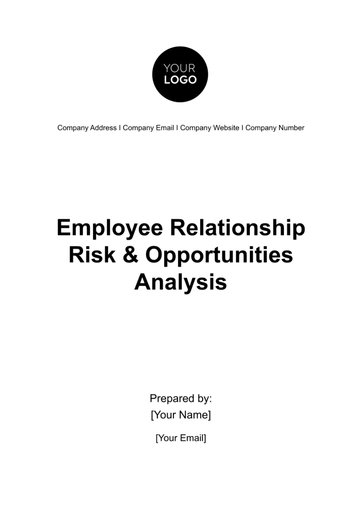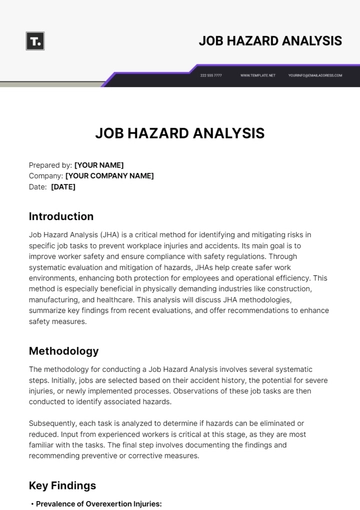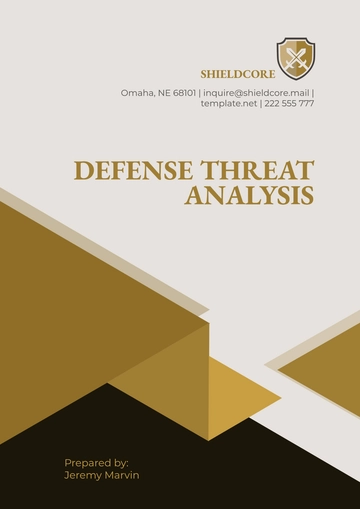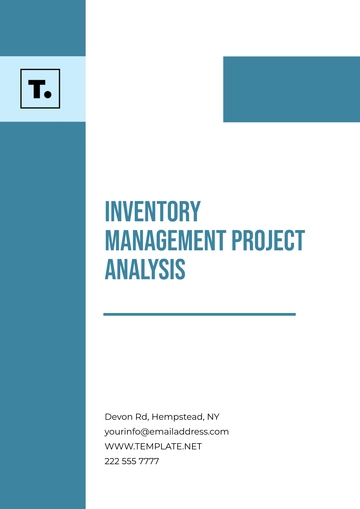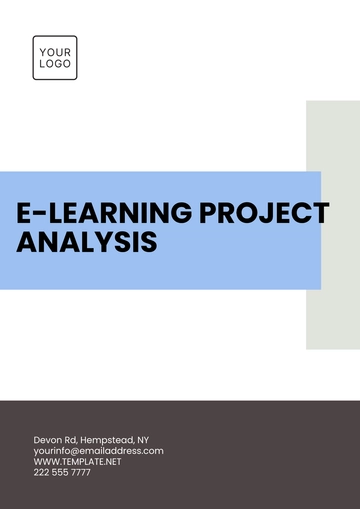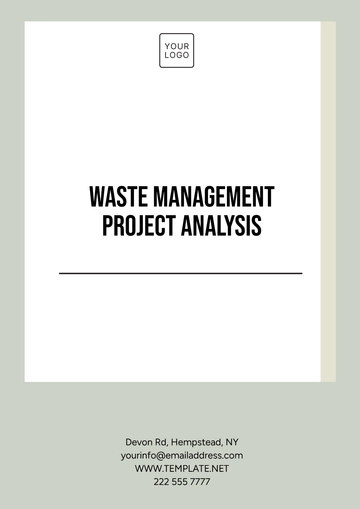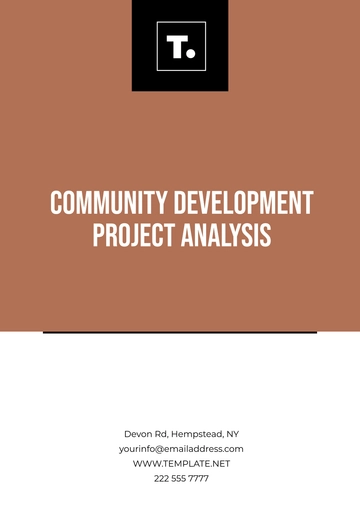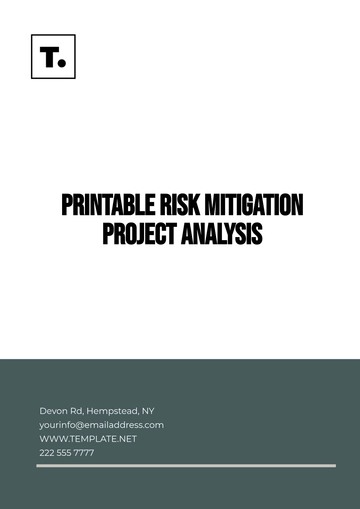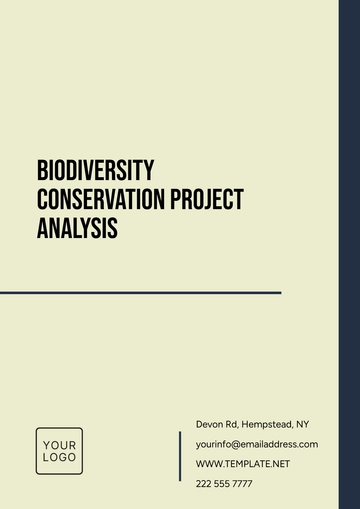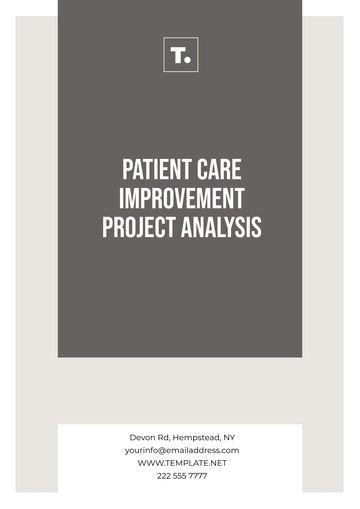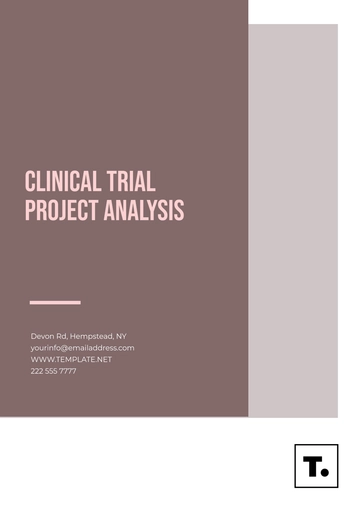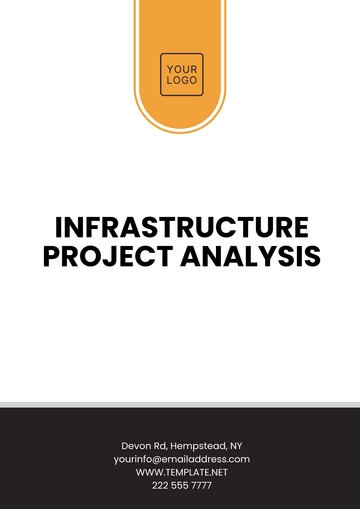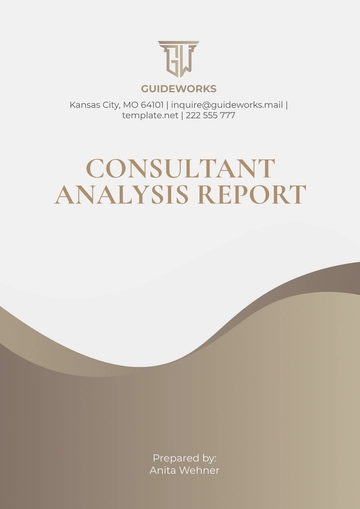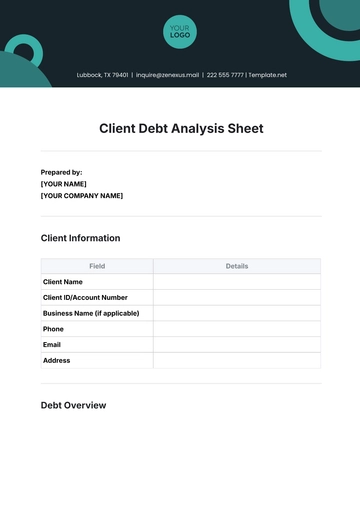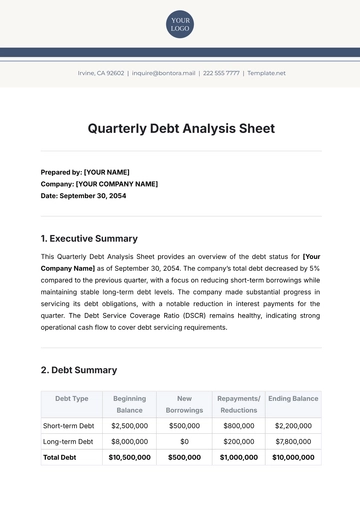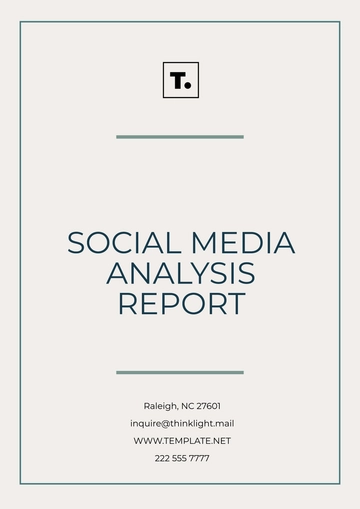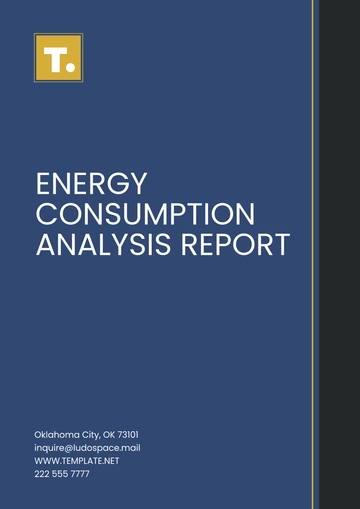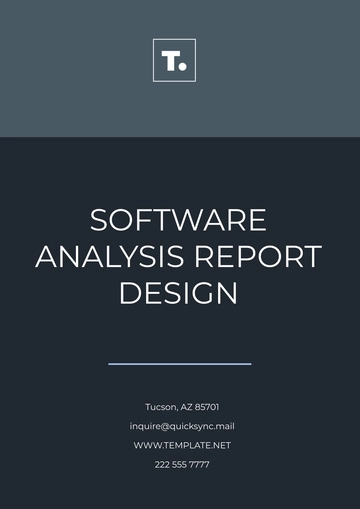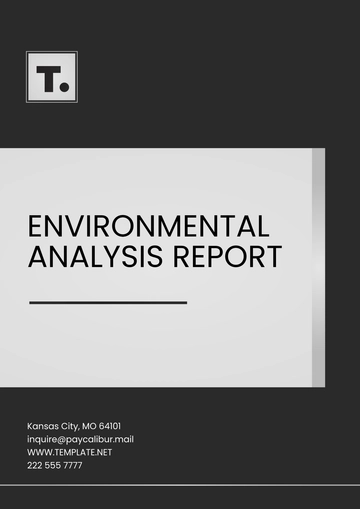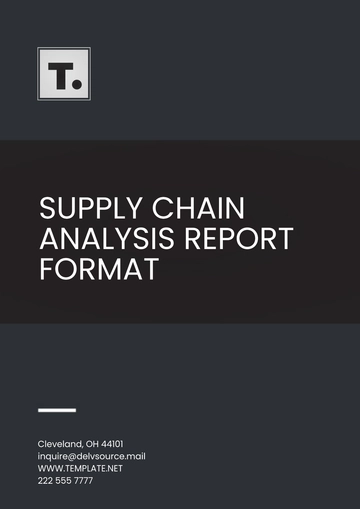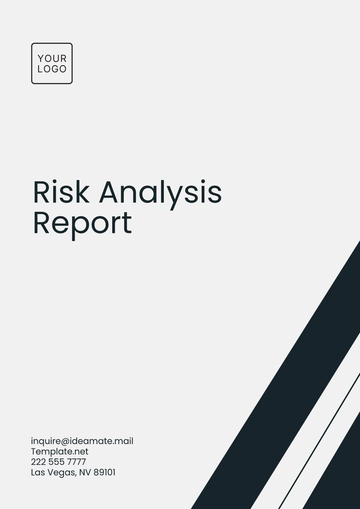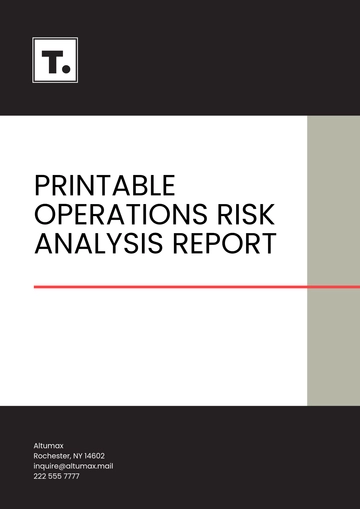Free Occupational Health & Safety Analysis HR
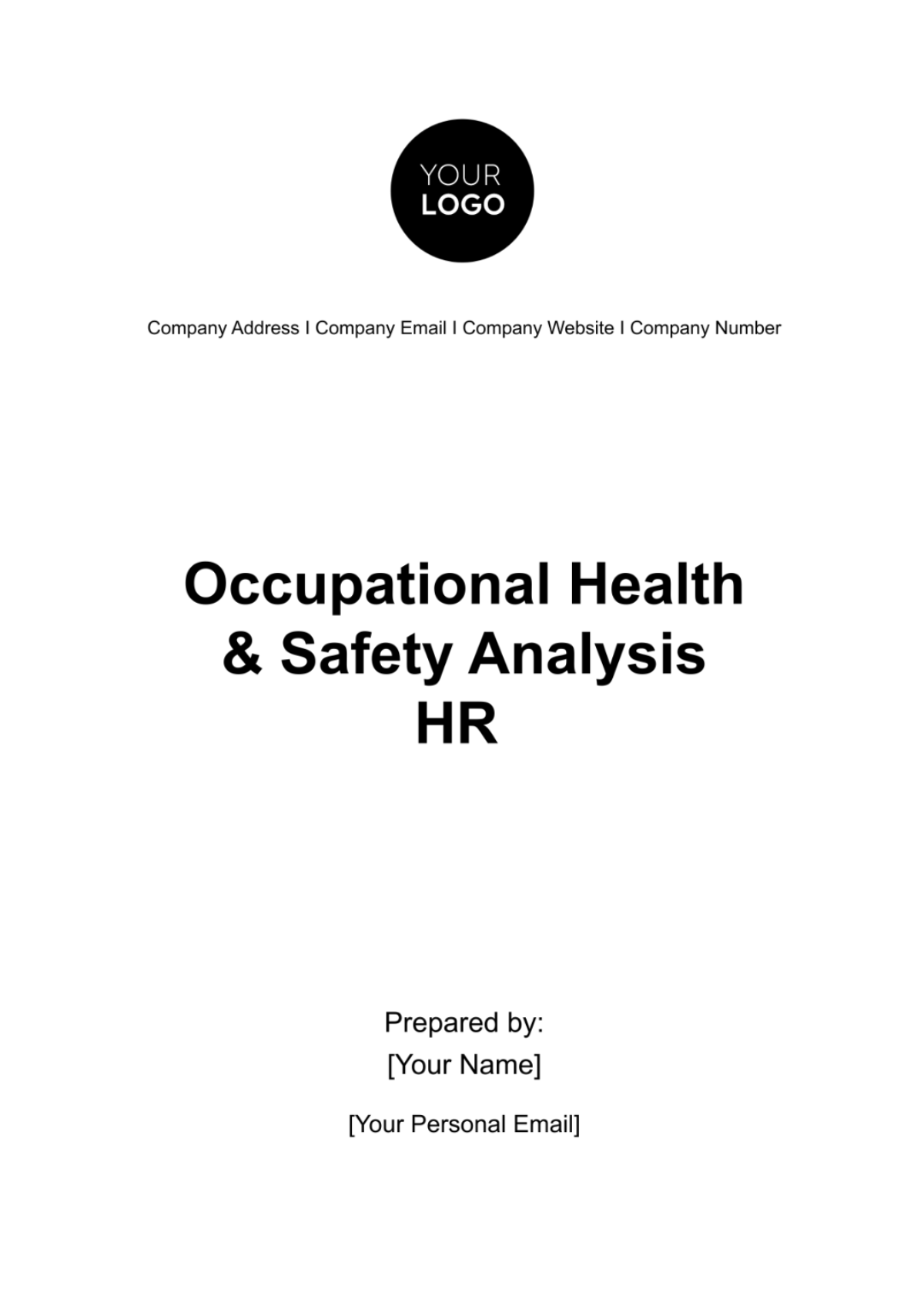
I. Introduction and Overview
In the current era, the health and safety of employees stand paramount for businesses across the world. A thriving organization understands that its greatest assets are its employees, and their safety ensures the company's continual growth and productivity. According to a recent study by the World Health Organization (WHO), businesses that prioritize occupational health and safety (OHS) observe a 40% decrease in workplace accidents. Similarly, a case study from [Industry Name] showcased that organizations with robust OHS programs recorded a 30% increase in employee productivity and a 25% boost in employee retention rates.
Purpose of the Analysis
The Occupational Health & Safety Analysis (OHSA) is not merely a procedural document for [Your Company Name]; it is a commitment. A commitment to safeguarding every individual who contributes to the company's mission and vision. The primary objective of this analysis is to eradicate potential hazards, align with regulatory mandates, and nurture an environment where safety isn't an afterthought but a proactive measure.
Scope of the Occupational Health & Safety (OHS) Program
For [Your Company Name], safety knows no bounds. From the intricate processes of [Department A] to the expansive tasks of [Department Z], every facet of our operations is under the scrutiny of our OHS program. Whether our employees are working from the comfort of their offices or executing tasks in the field, their well-being is our foremost priority.
Regulatory and Compliance References
Ensuring a safe workplace isn't just about internal commitment—it's also about aligning with industry standards and regulatory bodies that oversee OHS. [Your Company Name] strictly follows guidelines set by [Relevant Regulatory Authority]. Additionally, the company stands proudly compliant with the [Specific Industry Standard or Certification], reaffirming our dedication to maintaining a gold standard in safety measures.
Key Stakeholders and Responsibilities
The successful execution and sustainability of any program rely on the collaborative efforts of its stakeholders. At [Your Company Name], this belief is at the heart of our OHS program. While our leadership, management, and the specialized OHS team remain at the forefront of this initiative, it's vital to understand that safety is everyone's responsibility. Every single employee, irrespective of their designation, plays a pivotal role in ensuring that our workplace is a haven of safety, security, and well-being.
II. Risk Identification and Assessment
Navigating the vast landscape of occupational safety requires vigilance in identifying potential threats and subsequently assessing their impact. This not only requires a meticulous approach but also the collaborative effort of everyone involved. Our systematic approach to risk identification and assessment ensures that all aspects of workplace safety are addressed and mitigated before they escalate.
Workplace Hazard Identification
It's a harsh truth that even the best workplaces are susceptible to hazards. By identifying these threats, we can take proactive measures to rectify them. Our comprehensive assessment has brought several potential dangers to light:
Physical Hazards: | Machinery and equipment, if not appropriately safeguarded, can pose significant risks. Similarly, exposed electrical components can be a potential source of accidents if left unattended. |
Biological Hazards: | In certain specialized work environments, exposure to harmful bacteria or pathogens could pose a risk. This is particularly relevant for industries like healthcare or laboratories where biological samples are prevalent. |
Chemical Hazards: | The use and storage of chemicals demand stringent safety protocols. Without them, solvents or reactive substances might become a severe threat to workers. |
Ergonomic Hazards: | Often overlooked, ergonomic risks can lead to long-term health issues for employees. Prolonged sitting, poor workstation design, or repetitive tasks can be detrimental to one's health if not addressed timely. |
Psychosocial Hazards: | Beyond the physical workspace, it's imperative to ensure that our employees' mental and emotional well-being is safeguarded. This encompasses addressing workplace stressors, ensuring a harassment-free environment, and fostering a supportive work culture. |
Hazard Reporting Mechanisms
Open communication channels are pivotal in ensuring the effectiveness of any risk management system. At [Your Company Name], we prioritize this by offering multiple avenues for hazard reporting:
Digital Reporting: Through the [Specific Software/Tool], employees can swiftly report any observed hazards. This tool ensures timely responses and keeps a systematic record of all reports for future reference.
Direct Communication: Employees are encouraged to engage with their immediate supervisors if they notice anything amiss. This face-to-face interaction often aids in providing a clearer picture of the situation at hand.
Importantly, we respect the privacy of our employees. All hazard reports are treated with utmost confidentiality, and measures are in place to ensure that employees can voice concerns without any fear.
Risk Assessment Methodology
Identifying a hazard is only the first step. A structured evaluation process follows this to determine the risk associated with each hazard. Our methodology is rooted in three primary considerations:
Frequency of Exposure: Understanding how often employees come into contact with the hazard helps in prioritizing which risks need immediate attention.
Potential Severity: Assessing the potential harm or injury that might result from the hazard is crucial in understanding its overall impact.
Current Control Measures: We also evaluate the effectiveness of any existing preventive measures. This helps in determining if additional interventions or modifications are required to ensure a safe environment.
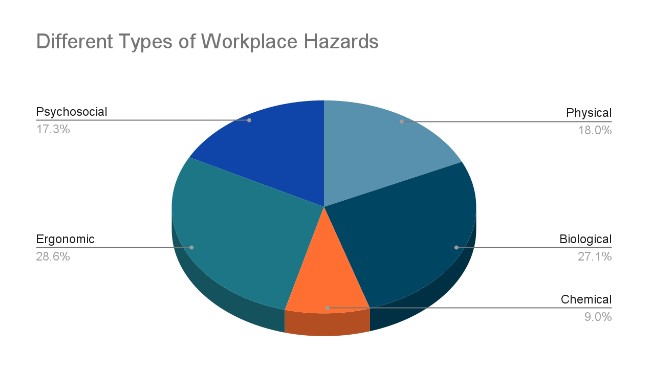
III. Control Measures and Mitigation Strategies
Safety, while an innate necessity, is also a systematic process that requires strategic planning and rigorous implementation. Recognizing potential hazards is a foundational step, but addressing and mitigating these risks is where the true challenge lies. Our commitment to maintaining a safe work environment is evident through our holistic approach to risk control, encompassing everything from proactive hazard elimination to comprehensive emergency response measures.
Hierarchy of Controls
Every hazard, depending on its nature and severity, demands a unique approach to control. Our method follows a systematic hierarchy, ensuring that the most effective measures are prioritized:
Elimination: The most effective control measure is, naturally, the complete removal of the hazard. This might involve changing certain operational methods or discontinuing risky processes.
Substitution: If elimination isn't viable, we consider substituting the hazardous process or material with a safer alternative, thereby reducing the risk without compromising productivity.
Engineering Controls: Where elimination and substitution are not feasible, we turn to engineering solutions. This could involve the introduction of safety barriers or equipment modifications to safeguard users from direct exposure to the hazard.
Administrative Controls: Operational modifications, like shift rotations, scheduled breaks, or job task variations, can help in reducing prolonged exposure to certain hazards.
Personal Protective Equipment (PPE): As a last line of defense, PPE ensures that employees have an added layer of protection when working in potentially hazardous environments.
Implementation of Safety Protocols and Guidelines
A well-informed workforce is the backbone of a safe work environment. This is why [Your Company Name] has meticulously documented safety guidelines and protocols. Available on our intranet, these guidelines not only offer preventive measures but also provide clear instructions on the appropriate response in case of incidents. Additionally, we recognize the importance of practical knowledge and regularly conduct drills and mock emergencies to reinforce these protocols in real-world scenarios.

Training and Education Programs
Knowledge is a powerful tool in risk mitigation. [Your Company Name] remains resolute in its commitment to employee education. We organize periodic training sessions that address not only general safety procedures but also hazards that might be specific to individual roles or departments. This dual focus ensures that every member of our team is well-equipped to handle both common and unique challenges in their daily tasks.
Emergency Response and Preparedness Planning
In the unfortunate event of an emergency, swift and organized action is paramount. Our emergency response plan is a testament to our preparedness for such situations. It meticulously outlines evacuation procedures, ensuring safe and rapid exit from hazardous zones. Additionally, the plan details first-aid measures and sets up clear communication protocols. This comprehensive approach ensures that, in times of crises, every employee knows their role and the steps they need to take to safeguard themselves and their colleagues.
IV. Monitoring, Review, and Continuous Improvement
In the realm of Occupational Health and safety, complacency is not an option. Continuous vigilance and iterative improvement are essential to ensuring that safety standards evolve with changing circumstances and challenges. At [Your Company Name], our commitment to OHS doesn’t end at implementation. We believe in a rigorous process of monitoring and refining our strategies, ensuring that we consistently uphold the highest standards of safety and health for all members of our organization.
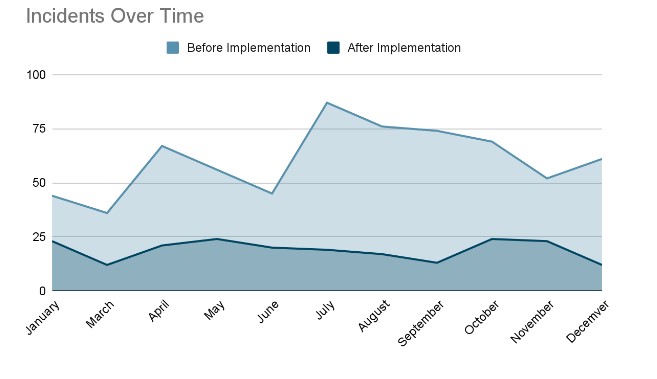
Regular Safety Audits and Inspections
To maintain our position at the forefront of workplace safety, routine checks are paramount. Our OHS team conducts quarterly inspections, meticulously reviewing every facet of our operations to identify and rectify potential vulnerabilities. Furthermore, to ensure unbiased evaluations and adherence to industry best practices, we collaborate with third-party experts for annual audits. This external perspective not only lends credibility to our processes but also brings fresh insights and recommendations for enhancement.
Incident Reporting and Investigation Procedures
In the unfortunate event of a safety incident, it's crucial that we don't merely react, but also learn and adapt. Our established protocol for incident reporting ensures that every event, irrespective of its magnitude, undergoes a detailed investigation. This allows us to dissect the causative factors, derive lessons, and most importantly, implement corrective actions to prevent any recurrence.
Key Performance Indicators (KPIs) for OHS
Quantifiable metrics provide an objective view of our OHS program's effectiveness. By tracking KPIs such as the "Number of Incidents," "Training Hours," and "Safety Drills Conducted," we can gauge our progress and pinpoint areas that might require additional focus. These metrics, reviewed periodically, offer a clear roadmap for continual improvement, ensuring that our OHS initiatives are always aligned with our overarching safety goals.
Feedback Mechanism for Employees
The foundation of any successful OHS program is the collective contribution of every employee. Recognizing this, we have created multiple avenues for our workforce to share their feedback. Monthly town hall meetings provide a platform for open dialogue, addressing concerns, and brainstorming improvements. For those who prefer a more discreet approach, suggestion boxes are placed across our facilities. Additionally, our anonymous online portal ensures that every voice, even if not identifiable, is heard and valued. These feedback mechanisms reiterate our belief that safety is a collaborative effort, and every perspective plays a pivotal role in enhancing our OHS standards.
V. Documentation and Record-Keeping
Documented evidence plays a pivotal role in validating the commitment and efforts towards Occupational Health & Safety (OHS). In this ever-evolving digital era, where data serves as a cornerstone for decision-making, [Your Company Name] ensures that meticulous record-keeping complements its rigorous OHS measures. Proper documentation not only ensures transparency and accountability but also serves as an invaluable tool for analysis, leading to informed strategies and improvements.
Maintenance of Safety Data Sheets (SDS)
Safety Data Sheets are integral to the proper handling and understanding of materials used within the organization. Ensuring that employees have access to this vital information is paramount. Every work area is equipped with the necessary SDSs for ready reference. Furthermore, recognizing the need for accessibility and swift retrieval, we have digitized all SDSs, making them available on the company's secure digital portal for employees to peruse at their convenience.
Record of Safety Training and Certifications
Training is a continuous endeavor, and keeping a tab on the sessions undertaken and certifications earned is crucial. The Human Resources department diligently maintains a comprehensive log detailing each employee's safety training journey. This record not only helps in planning future training sessions but also serves as a testament to the commitment each member has shown toward imbibing and upholding safety standards.
Incident and Accident Logs
While we strive for a zero-incident workspace, understanding and learning from past incidents is crucial. Every incident, regardless of its scale, is logged in detail. This record is more than just a documentation—it's a chronicle that aids in dissecting events, identifying patterns, and most importantly, shaping preventive strategies to negate the occurrence of similar incidents in the future.
DATE | Nature of the Incident | Affected Department | Response/Action Taken |
|---|---|---|---|
[Month, Day, Year] | Electrical malfunction | Engineering | Shut down equipment; repaired wiring |
Regulatory Compliance and Inspection Reports
Regulatory compliance is non-negotiable. [Your Company Name] ensures that every interaction, inspection, and feedback from regulatory authorities is documented meticulously. These reports, archived for a period of [X years], not only serve as evidence of our compliance but also act as references to continually improve and align our practices with the highest industry standards.
In conclusion, at [Your Company Name], every document, every log, and every record is more than just a piece of paper or a digital file—it's a testament to our unwavering dedication to occupational health and safety. Our rigorous documentation procedures mirror our commitment, ensuring that we remain accountable, transparent, and always in pursuit of excellence in workplace safety.
- 100% Customizable, free editor
- Access 1 Million+ Templates, photo’s & graphics
- Download or share as a template
- Click and replace photos, graphics, text, backgrounds
- Resize, crop, AI write & more
- Access advanced editor
Enhance workplace safety with Template.net's Occupational Health & Safety Analysis HR Template. Conduct thorough safety assessments and risk analyses with ease. Identify potential hazards, implement preventive measures, and ensure employee well-being. Streamline your safety procedures and compliance efforts, with this customizable and editable tool. Elevate your HR practices by editing this template with our Ai Editor Tool.
